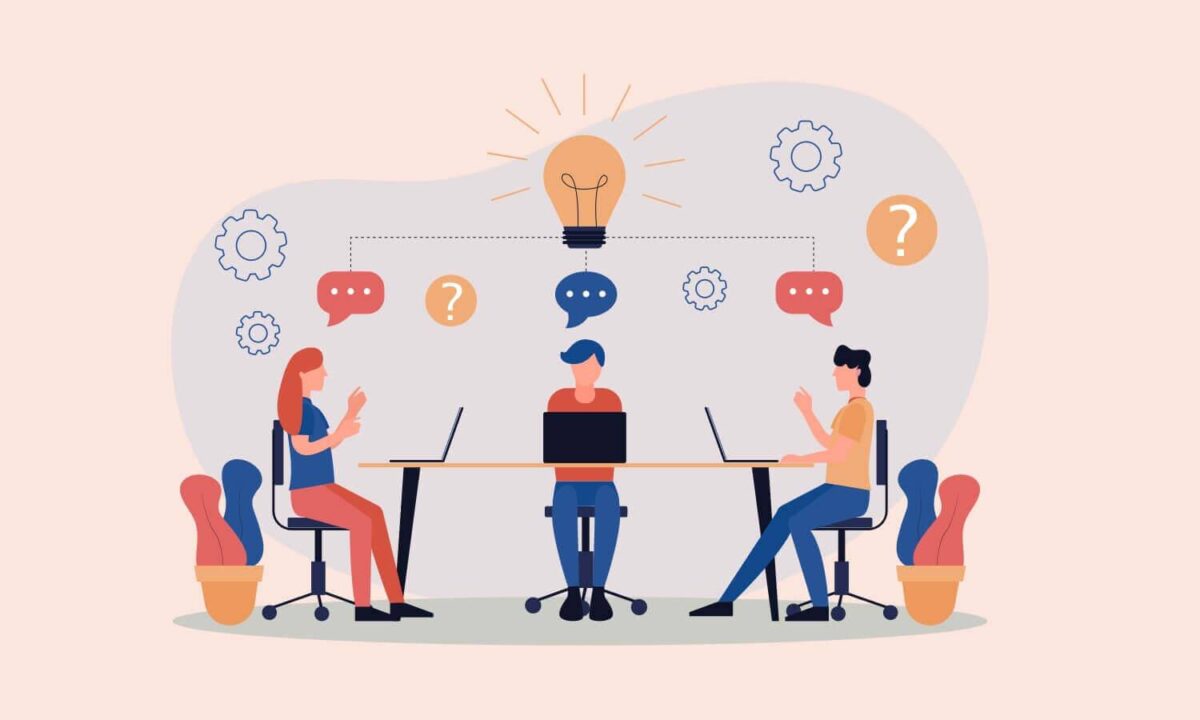Introduction
A Journey from Insight to Framework
Not too long ago, as I navigated the complexities of guiding organizations through their digital transformation journeys, I found myself returning to a core realization: true transformation must be holistic. It is never just about the Technology. Nor is it solely about the bottom line, the brand, or the people. Instead, it is the synergy of all these elements—woven together in a deliberate, structured manner—that shapes genuine and sustainable success.
Inspired by the classic Balanced Scorecard model—which traditionally centers on four dimensions: Financial, Customer/Stakeholder, Internal Processes, and Learning & Growth—I sought to reinterpret and elevate it for the digital era. The result was what I now call the Digital Business Transformation Canvas & Catalyst Framework 2.0. This framework expands the traditional boundaries, placing digital capabilities, data-driven decision-making, and security at the heart of the transformation. It also recognizes the power of co-creation, sustainability, and community trust—elements often overlooked in older models.
Digital Business Transformation Canvas & Catalyst Framework 2.0: A Coordinated Cross-Team Leadership for Integrated Digital Business Transformation.
The essence of the framework is straightforward:
- Balanced, But Transformed: We still ground ourselves in the four classic scorecard dimensions but enhance them to reflect digital priorities.
- C-Suite Alignment: Each dimension is championed by different C-level leaders, ensuring integrated leadership and shared accountability.
- Eight Pillars of Catalysis: The “CATALYST” acronym stands for eight essential pillars driving digital success. Each pillar has six elements, giving us 54 total building blocks to assess, strengthen, and track maturity.
- Assessment and Roadmapping: Every element is measured on a simple 1-to-5 Likert scale, making it easy to diagnose current maturity, set targets, and identify improvement steps.
- From Vision to Reality via PDCA: The Plan-Do-Check-Act cycle provides a practical implementation approach.
- The Blue Leader Concept: Introducing a strategic mindset that quantifies digital impact, ensuring that transformation efforts are as measurable and transparent as a well-managed financial ledger.
By blending narrative, methodology, and actionable detail, I hope this framework serves as both a compass and a roadmap—guiding organizations as they journey from their current state to a truly transformed digital future.
From Traditional Balanced Scorecard to a Digital Transformation Balanced Scorecard
In the past, a Balanced Scorecard focused on four perspectives—Financial, Customer, Internal Process, and Learning & Growth. I extended these perspectives to a Transformation Balanced Scorecard, encompassing digital maturity, stakeholder trust, agility, sustainability, data-driven intelligence, and a robust Technology foundation.
Now, each C-level leader is associated with one dimension:
- The CEO and CFO oversee Financial Performance, ensuring not just revenue growth but also sustainable, optimized value creation.
- The CMO and CSO (Chief Sustainability Officer) care deeply about Customer & Stakeholder Experience, ensuring trust, satisfaction, and positive brand resonance.
- The COO and CDAO (Chief Data & Analytics Officer) focus on Internal Business Processes, enabling lean, data and AI-driven operations.
- The CHRO and CIO/CTO oversee People & Technology, ensuring that digital literacy, capability building, and secure IT infrastructures form a stable backbone for transformation.
In short, every member of the C-suite has a role to play, and each dimension connects seamlessly with the others.
The Eight Pillars of the Catalyst Framework 2.
8 Pillars of Integrated and Sustainable Digital Business Transformation
The CATALYST Framework 2.o is a structured guide composed of 8 interlinked pillars, each beginning with a letter from the word “CATALYST.” Each pillar corresponds to critical facets of digital transformation, ensuring organizations approach change comprehensively. Within each pillar lie sub-elements—54 in total—each assessed on a 1-to-5 maturity scale. This scaling allows organizations to gauge their current state and chart a clear path toward higher maturity levels.
8 Pillars of the CATALYST Framework:
- Co-Created Strategy & Innovation
- Augmented Financial Performance
- Trusted Community Experience
- Actionable Sustainability
- Lean Digital Operations
- Your Data & AI Transformation
- Smart Organization & Culture
- Technology & Security Management
Each pillar is further broken down into six key elements, providing a granular view of what it takes to master that area. With each element scored on a 1–5 scale, leaders can identify strengths, uncover gaps, and prioritize initiatives in their digital roadmap. Over time, as maturity increases, organizations reduce the risk of failure, establish operational resilience, and set the stage for sustainable transformation.
Maturity Assessment with a Simple Scale (1-5)
For each of the 54 elements, organizations gauge their current maturity on a scale of 1 to 5:
- Nascent stage, minimal capabilities, largely ad-hoc efforts.
- Early formalization, with partial systems in place.
- Established but still improving, with consistent processes and growing alignment.
- Well-integrated, optimized, and data-driven across departments.
- Leading-edge, continuously innovating and benchmarking best practices.
This maturity model serves as both a diagnostic tool and a roadmap. It helps identify strengths, weaknesses, and the path forward, guiding incremental improvements over time.
Pillar 1: Co-Created Strategy & Innovation (CEO)
This pillar ensures that strategy formation and innovation are collaborative, continuous, and aligned with market realities. Its six elements are:
- Collaborative Vision Development: Jointly formulate strategic visions with input from cross-functional teams, customers, and partners. Maturity 5 involves a fully inclusive visioning process, empowering everyone to contribute to forward-looking strategies.
- Innovation Culture Promotion: Nurture a growth mindset and experimentation. At maturity 5, the organization fosters intrapreneurship, celebrates failures as learning, and constantly seeks fresh ideas.
- Strategic Partnerships and Alliances: Forge win-win partnerships. High maturity organizations build robust ecosystems that accelerate innovation and market presence.
- New Digital Business Models: Continuously experiment with and adopt emerging digital revenue models. A top-tier maturity rating sees the organization thriving with subscription models, platform-based ecosystems, or data monetization initiatives.
- Market and Trend Analysis: Harness advanced analytics to predict market shifts. At maturity 5, trend insights are integrated into strategic planning and product development.
- Innovation Governance: Establish formal frameworks to prioritize and fund innovation initiatives. Full maturity ensures transparent criteria for resource allocation, a balanced portfolio of initiatives, and well-defined innovation KPIs.
Pillar 2: Augmented Financial Performance (CFO)
With digital transformation, financial success hinges on new value drivers and improved resource utilization. These six elements guide sound financial stewardship:
- Economic Value Added (EVA) Enhancement: Focus on maximizing shareholder value. At maturity 5, EVA metrics are embedded into project evaluation, ensuring that all digital initiatives align with value creation.
- Blue Ledger Implementation: Integrate Blue Ledger approach for transparent business transformation performance and improved trust among stakeholders.
- Cost Management and Optimization: Use automation and analytics to reduce costs. A mature organization continually refines operations, leveraging predictive cost modeling and supplier optimization.
- Financial Process Automation: Streamline finance workflows with RPA, AI-driven forecasting, and real-time analytics. Maturity 5 ensures near-instant insights and decision-making support.
- Performance Metrics and KPIs: Evolve beyond traditional financial metrics to include digital adoption, customer lifetime value, and other future-focused KPIs.
- Financial Risk Management: Implement predictive analytics for risk scenarios. A fully mature approach proactively identifies risks, hedges effectively, and adapts financial strategies swiftly.
Pillar 3: Trusted Community Experience (CMO)
This pillar addresses how to build trust, loyalty, and satisfaction in a digital ecosystem:
- Stakeholder Journey Mapping: Analyze end-to-end experiences for customers, partners, and communities. At maturity 5, journey maps are continuously updated and personalized.
- Digital Engagement Platforms: Create interactive, multi-channel platforms that foster dialogue and co-creation. Mature platforms adapt in real-time to user behaviors.
- Feedback and Support Systems: Offer omnichannel feedback loops and AI-driven support. At the highest maturity, insights from feedback guide product/service enhancements.
- Community Building Initiatives: Develop forums, events, and networks that encourage collaboration. Advanced maturity sees vibrant communities influencing brand perception and strategy.
- Personalization Strategies: Tailor content, offers, and experiences to individual preferences using AI. A fully mature organization delivers hyper-personalized, context-aware interactions.
- Value-Added Services: Introduce complementary services that deepen relationships. At the highest level, organizations anticipate needs and innovate services proactively.
Pillar 4: Actionable Sustainability (CSO)
In the digital era, sustainability is not a side project but a core strategic imperative:
- Digital Sustainability Strategy: Embed sustainability goals into digital initiatives. High maturity ensures sustainability KPIs are equal in importance to financial returns.
- Environmental Monitoring Technologies: Deploy IoT sensors, analytics, and other tools to track environmental impact. A mature enterprise leverages predictive analytics to minimize its footprint.
- Automation for Sustainability: Use robotics and AI to reduce waste, energy consumption, and emissions across the value chain.
- Sustainable Digital Practices: Pursue responsible e-waste policies, green data centers, and ethical sourcing of digital components.
- Stakeholder Engagement Platforms: Engage customers, employees, and regulators through robust sustainability platforms. At maturity 5, these platforms encompass the full spectrum of Scope 1, 2, and 3 emissions, integrating and aligning the interests of all stakeholders across the entire value chain.
- Sustainability Reporting and Analytics: Provide transparent, data-driven reports on environmental and social performance, aligned with global standards. Mature organizations use these insights for continuous improvement.
Pillar 5: Lean Digital Operations (COO)
Operational excellence in a digital world demands agility, efficiency, and resilience:
- Core Process Digitization: Transform key processes into digital workflows. At maturity 5, core processes are seamless, integrated, and fully transparent.
- Digital Process Automation: Implement RPA, AI, and low-code tools to automate routine tasks. The most mature organizations achieve near-zero manual interventions.
- Lean Operational Efficiency: Eliminate waste and redundant steps. Continuous improvement methodologies (e.g., Kaizen) and analytics combine to drive ongoing refinement.
- Agile and Flexible Operations: Adopt Agile frameworks to accelerate delivery. High maturity means operations can pivot rapidly to changing market needs.
- Supply Chain Digitization: Integrate suppliers, partners, and logistics into a digital ecosystem. At the highest maturity, supply chains predict disruptions and self-optimize.
- Operational Risk Management: Use predictive analytics to anticipate and mitigate operational risks. Mature organizations dynamically reconfigure operations in response to potential threats.
Pillar 6: Your Data & AI Transformation (CDAO)
Data is the new currency, and AI its powerful engine. This pillar focuses on leveraging data as a strategic asset:
- Data & AI Strategy and Governance: Set a clear vision for data usage, ethics, and security. Mature organizations have well-defined data governance, ensuring trust and compliance.
- Enterprise Data Platform: Build centralized, scalable data ecosystems. At maturity 5, platforms seamlessly integrate structured and unstructured data for timely insights.
- Data & AI-Driven Enterprise: Embed AI and data analytics into decision-making. Highly mature firms solve complex challenges and predict opportunities using advanced models.
- Advanced Analytics & AI Capabilities: Leverage machine learning, generative AI, and predictive analytics to drive innovation. At maturity 5, organizations independently develop, deploy, and optimize advanced AI solutions.
- Data Literacy and Culture: Cultivate an organization-wide understanding of data. Mature organizations empower every employee to use data in their daily work.
- Ethical AI Practices: Ensure fairness, transparency, and accountability in AI. Maturity 5 involves ongoing audits, stakeholder engagement, and compliance with global AI ethics standards.
Pillar 7: Smart Organization & Culture (CHRO)
Culture is the heart of transformation. Without it, even the best strategies falter:
- Digital Structure and Governance: Redesign organizational hierarchies to support digital agility. Mature companies employ flexible structures that adapt to emerging roles and technologies.
- Digital Expertise and Proficiency: Develop a workforce skilled in digital tools and methodologies. At the highest maturity, employees are cross-trained and continuously upskilling.
- Digital Leadership and Mindset: Leaders model adaptability and inspire innovation. Maturity 5 leaders are authentic, data-driven, and future-oriented.
- Talent Acquisition and Nurturing: Attract and retain top digital talent. Mature processes ensure a steady pipeline of skilled candidates and robust succession planning.
- Digital Literacy: Provide continuous training and resources, ensuring all staff can effectively use digital tools. Full maturity means digital fluency is as commonplace as email.
- Digital Workforce Transformation: Integrate digital workforce and agentic AI seamlessly into the business. At maturity 5, digital and AI agents collaborate effectively alongside the human workforce, driving efficiency and innovation.
Pillar 8: Technology & Security Management (CIO/CTO/CISO)
The digital foundation must be secure, scalable, and aligned with business objectives:
- Technology Strategy and Architecture: Craft a technology blueprint that supports innovation. Mature architectures are modular, cloud-first, and API-driven.
- IT and Business Alignment: Ensure technology decisions directly support business goals. At the highest maturity, IT anticipates business needs, acting as a strategic enabler.
- Integrated Technology Infrastructure: Consolidate systems, data centers, and applications. Advanced maturity uses hybrid/multi-cloud strategies for optimal flexibility.
- Digital and Data Tools: Select and integrate best-of-breed tools for analytics, collaboration, and workflow efficiency. Mature organizations standardize toolkits and ensure interoperability.
- Digital Business Platforms: Establish ecosystems that enable partners, customers, and internal stakeholders to connect. Maturity 5 platforms drive growth and innovation at scale.
- Cybersecurity and Risk Management: Protect data, IP, and brand reputation with advanced threat intelligence. At full maturity, cybersecurity is proactive, AI-driven, and continuously evolving.
Implementing the Framework with PDCA
To bring the framework to life, I recommend using the Plan-Do-Check-Act (PDCA) cycle, a staple in ISO standards and quality management:
- Plan: Define your objectives, choose the elements you wish to improve first, and set target maturity levels. Develop an action plan that considers dependencies and resource allocation.
- Do: Execute the planned initiatives—implement new data platforms, introduce training programs, or refine customer engagement strategies. Ensure clear responsibilities and timelines.
- Check: Regularly measure progress against defined KPIs and maturity targets. Use analytics, surveys, and audits to verify whether changes are delivering the expected outcomes.
- Act: If results fall short, refine your approach. If you succeed, institutionalize the improvements and consider tackling the next set of elements. The PDCA cycle promotes continuous learning and refinement.
By using PDCA, organizations transform the Catalyst Framework from a static blueprint into a dynamic journey. Over multiple cycles, they evolve from a digital novice to a confident, mature digital enterprise.
The Blue Ledger Concept
Among the many ideas integrated into this framework, the concept of the Blue Leader stands out. In essence, it’s about applying the same rigor and transparency to digital transformation that we do in financial reporting.
- Just as a ledger records financial transactions, the Blue Ledger captures digital transformation’s quantifiable impact on revenue, cost reduction, operational efficiency, and customer satisfaction. It ensures that leadership teams can see how their investments and initiatives translate into tangible, measurable results.
- This mindset focuses on leaders who champion digital initiatives with accountability, clarity, and transparency. A Blue Leader encourages teams to record success and setbacks, continually learning from data, stakeholder feedback, and market changes.
By adopting a Blue Leader approach, the organization fosters trust, alignment, and shared understanding—key ingredients in sustaining momentum and ensuring that digital transformation is not just a buzzword but a demonstrable engine of value creation.
Conclusion
A Roadmap to Sustainable Digital Transformation
The Digital Business Transformation Canvas & Catalyst Framework 2.0 represents my cumulative experience and learnings from working on digital initiatives across various industries. By drawing on the classic Balanced Scorecard, aligning with the C-suite, and introducing a fresh approach through the eight CATALYST pillars, we now have a comprehensive tool to navigate the complexities of digital transformation.
This framework provides:
- A clear map of where you are and where you need to go.
- A vocabulary for discussing progress and obstacles.
- A methodology for aligning technology with strategic objectives.
- The maturity models and PDCA cycles to guide continuous improvement.
- A blueprint for building trust, sustainability, and innovation into the very core of the organization.
As digital transformation evolves—and it will—this framework offers a structured, dynamic path forward. I hope it inspires you to assess, refine, and ultimately accelerate your journey toward digital excellence. And should you choose to share this with others, may it serve as a reference point, a guide, and a catalyst for meaningful change.
A Final Note
Remember, your transformation is unique. Adapt the framework to your context. Take it step by step. Celebrate milestones. And, most importantly, never lose sight of the human element—because in the end, it’s people who shape technology, not the other way around.
As digital transformation evolves—and it will—this framework offers a structured, dynamic path forward. I hope it inspires you to assess, refine, and ultimately accelerate your journey toward digital excellence. And should you choose to share this with others, may it serve as a reference point, a guide, and a catalyst for meaningful change.
Connect with the Author:
For more insights on digital transformation, innovation frameworks, and leadership strategies, connect with me on LinkedIn. Let’s collaborate and drive meaningful change together.
Most Recent Posts
Explore the latest innovation insights and trends with our recent blog posts.













